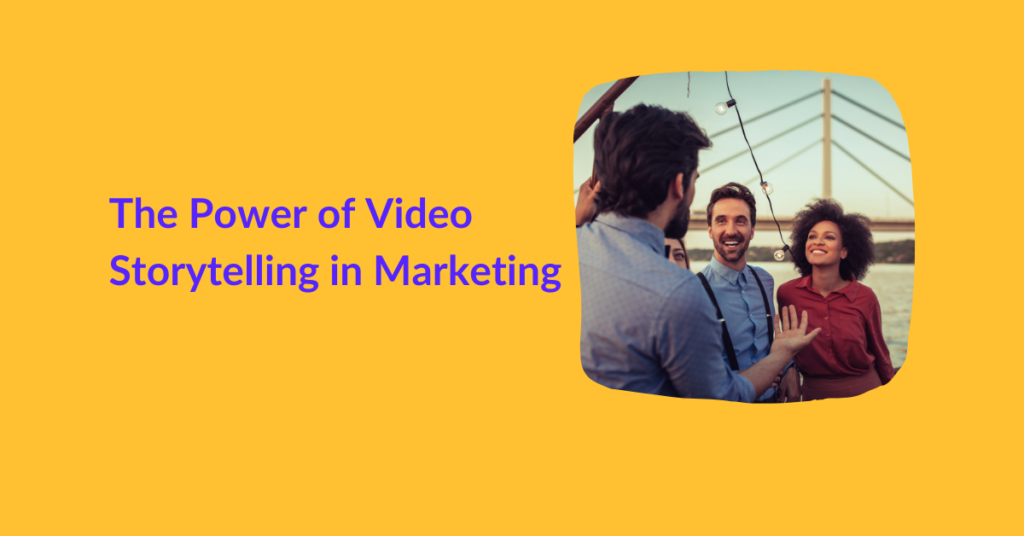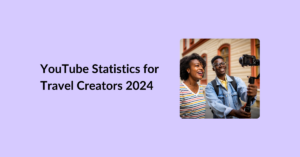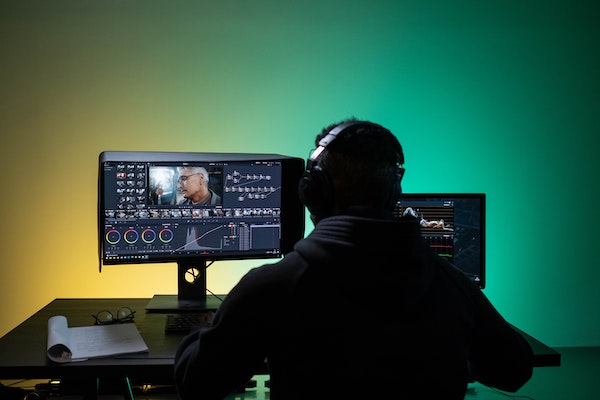Remember The Lego Movie from 2014? Or perhaps, Sonic the Hedgehog from 2020?
These movies perfectly demonstrate the power of video storytelling in marketing. You watched these movies ages ago, but you have some sort of memory or emotion attached to it.
If you were to walk into a toy store, there’s a high chance you’d pick Legos. Similarly, if you were to randomly download a game on your phone, you would rather pick Sonic Boom or Sonic Forces over anything else.
Because you’re familiar. And it reminds you of something.
That – my friend – is the power of video storytelling.
From a business perspective, it’s a one-time investment but it could yield profits for years – if you’re doing it right, of course.
In this post, we’ll explore the concept of video storytelling in deep detail and share how you too can leverage its power for your business.
Let’s get started!
Table of Contents
What is video storytelling?
By definition, video storytelling is simply ‘telling a story through a video’. It is a marketing tactic used by businesses to establish an emotional connection with their target audience and sell their brand or product in the process.
Although the definition is simple, the art of video storytelling is rather complex.
It’s a combined product of three different domains. These are:
- Content ideation & strategizing
- Video production
- Video editing
If you’re a small team (2-10 people), getting these three domains together won’t be much of a problem for you. And consequently, producing a storytelling video would be a mild challenge.
But the bigger your brand/business, the greater the challenge. It’s difficult to bring separate departments together and produce the perfect piece.
Of course, there are other factors too that impact the difficulty level of video production. But for now, what you need to know is – this marketing tactic is not recommended for businesses with:
- Limited marketing budgets (less than $100)
- Zero audience
- Highly technical audience
- Lack of authenticity or transparency
We also do not recommend complex video marketing to brands that deal with sensitive or complex topics (such as medical or legal issues) especially if you’re not well-established.
If any of these identifiers ring some bells for you, it’s a good idea to hop onto our guide on viral video marketing first.
How to make a storytelling video?
Here’s a step-by-step guide on how to make a storytelling video:
1. Set up some very specific goals
To begin with the process, first, determine why you want to create a storytelling video.
Some questions that you might want to specifically address are as follows:
- What product/service do you wish to promote?
- Where does this video stand in your marketing funnel? Does it create brand awareness or a desire for the solution you sell?
- What’s the next step you want your target audience to take after watching this video?
- What’s the budget for this video, and how much return on investment do you expect?
- What KPIs will you track?
The answers to these questions will give you direction for the entire process. You’ll know your limits (concerning messaging, equipment, effort, etc). You’ll also find motivation when the answers sketch a rough scope of success for you.
Note that video creation is a hectic and lengthy process, and we highly recommend setting up some financial and social motivators at the start of the process. It keeps your enthusiasm from dying.
We know, most creators would tell you otherwise. But trust us – you need to run after a few metrics to be able to give your best.
Chase money, followers, likes, reach, whatever you like. It really helps in creating content that your target audience will just love.
It’s also a great idea to organize your video creation goals in this SMART Goals template. Helps sail the boat smoothly!
2. Come up with a plot
Once you’ve decided on your goals, it’s time for you to come up with a plot. This will be the gist of your video, so get ready to spend a few days on it (if it’s a 2-minute long video). For videos above 10 minutes or so, you might want to dedicate a week or two to the plot.
A plot is basically a series of scenes that deliver the storyline and it comprises three basic components:
- Conflict
- Resolution
- Emotion
Note that these three do not make up the structure of a plot. Rather these are the essential elements that you need to ensure.
For structuring your plot, you may use any of the 7 proven plot structures outlined by Christophe Booker.
These are:

Once you’ve chosen the plot structure, think of a story idea that will interest your target audience.
To do this successfully, first figure out:
- What age group will be watching your video?
- What platform are you going to distribute this video on?
- What’s the suitable length of the video?
These are necessary to settle for a story idea and plot because well:
- Kids won’t watch Inferno.
- Adults won’t watch Number Blocks.
The complexity of your story idea should match your audience’s understanding skills, areas of interest, and attention span. And the plot structure you pick should align with it.
So, to come up with a unique story idea, browse your competitors, check out their storytelling videos, and learn how they’ve showcased and sold themselves with it.
Next, browse some of the best storytelling videos published to date. We’ll recommend you a few in a bit.
Once done, sit down with a pen and paper. Brainstorm story ideas. Make sure you only list ideas that are unique from what you’ve already watched and align with your SMART goals.
If you’re having a tough time thinking of anything at all, consider taking a suggestion or two from your team, content creation team, friends, and family. But do not involve them all in your video-making process!
If too many people handle one video, things can be disastrous! You lose time + end up with a video that does not achieve its intended purpose. And we’re speaking from experience. This is exactly why we dedicate one video editor to each client, instead of splitting the work between 3-8 people like most other video editing agencies.
We know what too many hands and minds can do to a video.
When deciding on a plot and solid storyline, it’s also advisable to decide the video format you want to opt for. You can choose from animated, talking head, text overlay, etc.
3. Align the script
As soon as the story idea is finalized, it’s time to hire a writer and get the script done!
If you want to save here, we recommend reading our guide on how to make YouTube videos using ChatGPT. There’s a whole section that guides on how you can have GPT write your video script.
But again, GPT is AI and limited. It cannot bring the emotions or plot twists that will WOW your audience. So, make sure you manually edit the script yourself. Or maybe hire a professional editor for the job.
4. Hire actors or a video production team
Next, it’s time to get to the production process. This is the most stressful part of all.
Why?
- Because you need to recruit a quality production team. Here’s a good guide on how to hire a video production team.
- Because you need to check every single camera angle, dialogue delivered, sync music, and every single clip recorded to ensure that the script takes the intended visual form.
- Because it’s an expensive process! The industry average is $800 – $1000 per finished minute. When we say ‘finished minute’, we also include video editing charges – but that’s if you’re hiring a high-end video editing agency. If you’re hiring experts from our labs, you’ll be paying half the price.
If you choose to hire actors individually, things are going to get tougher. That’s because it’s difficult to find a good actor on a budget and even more difficult to direct them as per your requirements.
But if you want to be acting yourself in the team, go ahead. It might be the way for you.
In case you have opted for an animated film, we recommend reading this guide; Ultimate Guide to Animation.
5. Edit the Video for Professional Touches
The last but most important step to create a storytelling video is editing.
If the video is shot well but lacks proper subtitles or background noise in the audio – you’re going to leave money at the table. Even if your target audience watches it, they won’t like or share it.
Most customers only want to associate with a brand if it makes them proud (i.e. if it’s gorgeous and shining). So, you need to have a content piece they are not shy or hesitant to talk about with others or share in their networks.
Give them a masterpiece – and half of it is gonna come from professional editing.
Professional video editors will help you incorporate:
- Music that triggers emotions
- Transitions that immerse the viewer
- Subtitle that eliminate ‘confusion’ factors
- Shorten the video to an appropriate length
And we’re happy to inform we hold expertise in this domain. We offer our expert video editing services at only $295/month. Browse our pricing plans here.
If you’d like to browse all your options, hop on to this guide to the top 15 video editing agencies to outsource.
Some Jaw-Dropping Examples
Now, let us share some excellent videos that exhibit the power of storytelling.
John Lewis Christmas Advert 2019

McDonald's - The Gift

Chipotle - The Scarecrow Animation

Ready to create some similar stuff? Let’s go!!🚀




